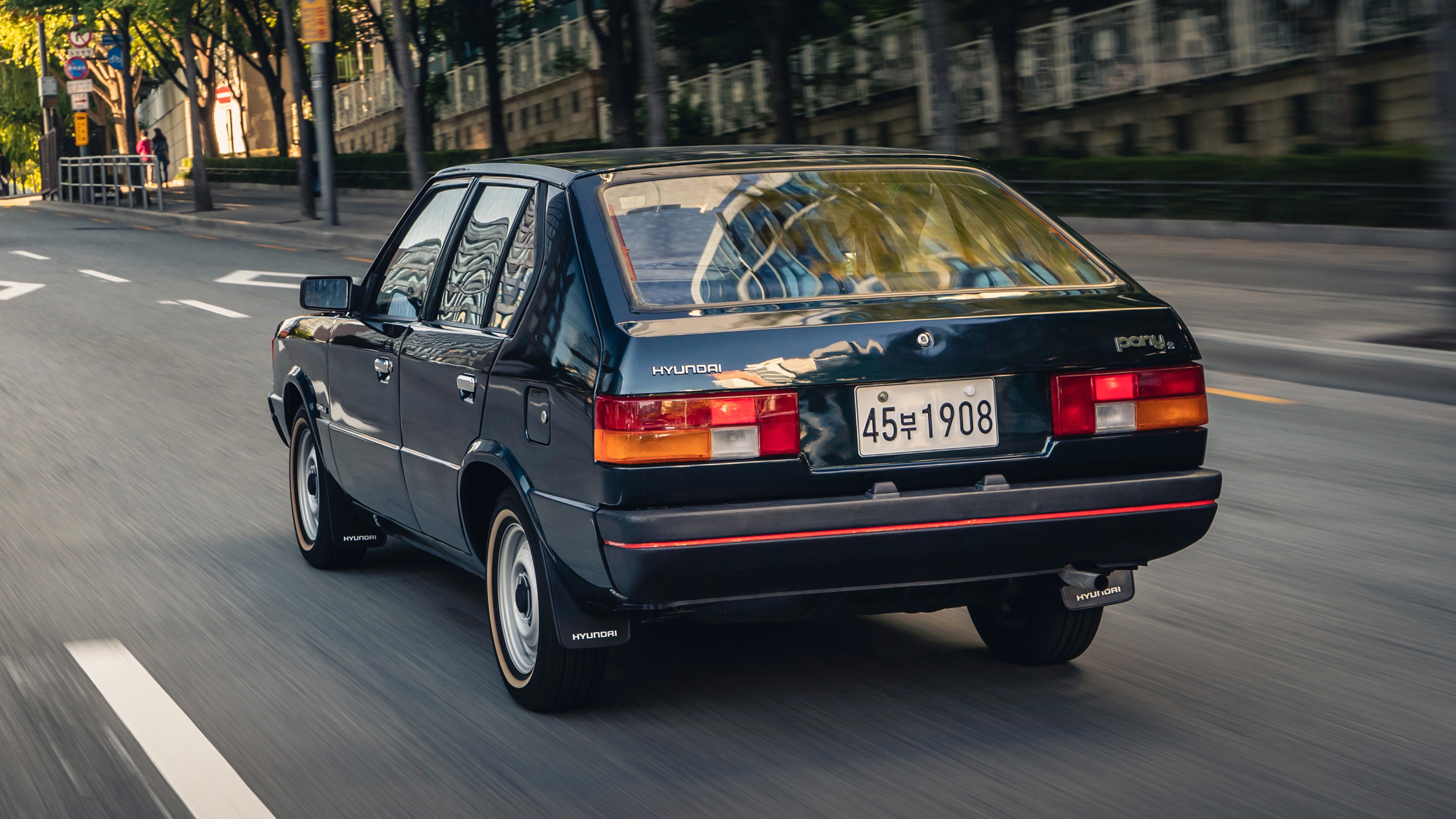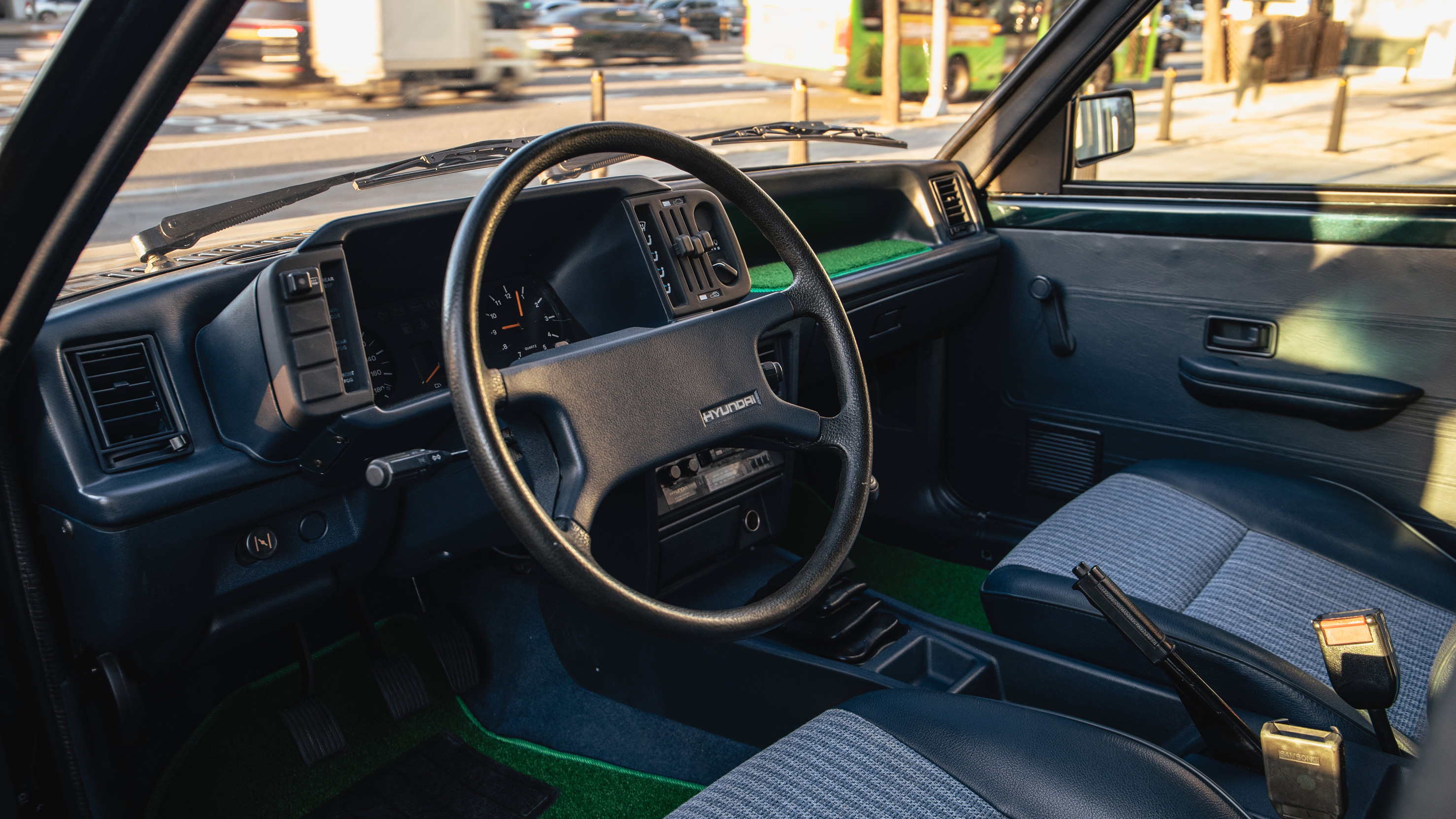
Hyundai Pony review
Interior
What is it like on the inside?
Firstly, it’s worth pointing out that this isn’t a museum grade prima donna. It’s got astroturf floor mats, a pockmarked gearlever and 72,000km on the clock. But otherwise it’s been well cared for. The steering wheel isn’t too shiny and the switchgear all works.
Look at it though, all blocky and clustered around the plain instrument pod. Actually quite nice to operate a car that isn’t trying to actively overawe you with its touchscreen capabilities. Nice slender steering wheel, too. There’s lessons to be learned here.
And lessons that probably have been learned, too?
Absolutely. The skinny pillars and slim doors do make for a light car that’s easy to see out of, but equally one you know would fold up better than a Brompton in a crash. The seats are flat and unsupportive, the steering wheels sits in your lap and it all feels a bit primitive – like the ergonomics are nearly there, but not quite.
Does it feel small on the road?
Not especially, because it was a mid-size hatchback, designed to take on the likes of the Ford Escort and Vauxhall Astra. It’s narrow, but over four metres long, so about the size of a modern supermini. But probably bigger inside because there’s not much thickness to the safety cell. You’d get five in happily (rear knee space isn’t great), and despite a high sill there’s oodles of bootspace, too.
Does it feel cheap inside?
God yes, if you’re comparing it to anything new, but by the standards of the 1970s it’s about par for the course. Everything is brittle moulded plastics – there’s a bit of soft touch around the dash, but you can see the boltheads visible under the vinyl door trims and there’s no attempt at design beyond the purely functional.
A quick word on the exterior: anyone else think it looks a bit like a Volvo 340 from the back?
Featured







